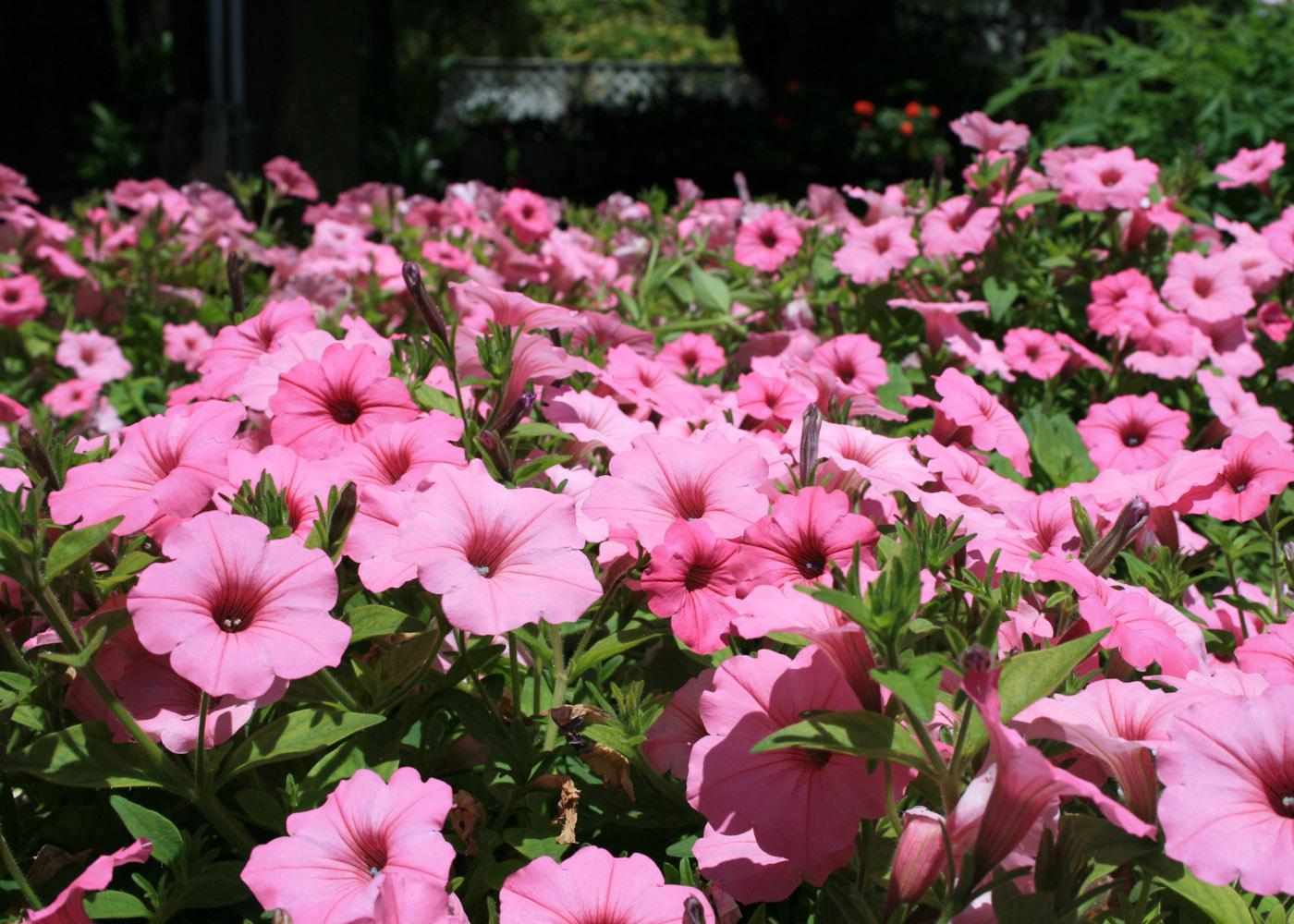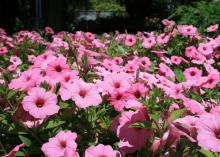Information Possibly Outdated
The information presented on this page was originally released on May 6, 2010. It may not be outdated, but please search our site for more current information. If you plan to quote or reference this information in a publication, please check with the Extension specialist or author before proceeding.
Supertunias bring color, life to gardens
There are many excellent petunias on the market—too many to detail in this column—so I am going to concentrate on what I consider one of the best petunias series: the Supertunias.
There are two groups in this series, the Supertunias and the Supertunia Vistas. Supertunias grow to about 12 inches tall and have a vigorous spreading habit. The Supertunia Vistas are bigger and can reach 24 inches tall. Both types are hummingbird and butterfly magnets.
With vibrantly beautiful colors, these groups have been good performers in Mississippi for the past few years. The Raspberry Blast, a deep hot pink with a vivid purple-red center, drew a great response from the gardening public at the 2009 Coast Garden and Patio Show.
Vista Bubblegum is a clear, bright pink that pairs well with the red and purple Vista Fuchsia. Other colors include Royal Velvet (blue with purple tints) and Bermuda Beach (coral salmon). But I consider the Pretty Much Picasso to be the best. Its color is unique—purple with hints of magenta and lime green margins—making it a visual stunner.
One of the problems in the past with the petunias was they needed to be deadheaded to help stimulate continued flowering. If you did not wear gloves while doing this task, you were left with a sticky mess on your hands.
But the new varieties are being bred and selected to be self-cleaning. This means that the spent and faded flowers will drop off freely throughout the summer and you can enjoy the flowers all season long without any added gardening chores.
Petunias can be grown in the ground, in containers, and in hanging baskets. In-ground, it is generally best to plant them on 18-inch centers. This spacing allows most petunias to form a lush, full mat of flowers. Always plant transplants at the original cell-pack or pot depth.
Grow petunias in full sun for full flowering potential. At least five to six hours of sun each day is best. Water petunias regularly because they do not like to dry out. Be sure your planting beds are well-drained and have good water-holding capability. The same advice goes for containers, which dry out faster and must be watered more frequently. Watering in the morning allows the leaves to dry sufficiently. Low-volume irrigation such as soaker hoses or drip lines work very well.
Petunias are heavy feeders and respond well to weekly treatments with water-soluble fertilizers. A common recommendation is to use one tablespoon of the water-soluble fertilizer dissolved in one gallon of water; apply this liberally to your petunias. You can use controlled-release fertilizers in combination with the water-soluble for a consistent supply of nutrients. Always follow the label directions.
Petunias are susceptible to soil-borne diseases and should not be planted in the same place in the garden every year. This is the same concept as crop rotation in your vegetable garden. Take the opportunity to move them around the landscape every year. When growing petunias in containers or hanging baskets, replace the potting mix each year.









